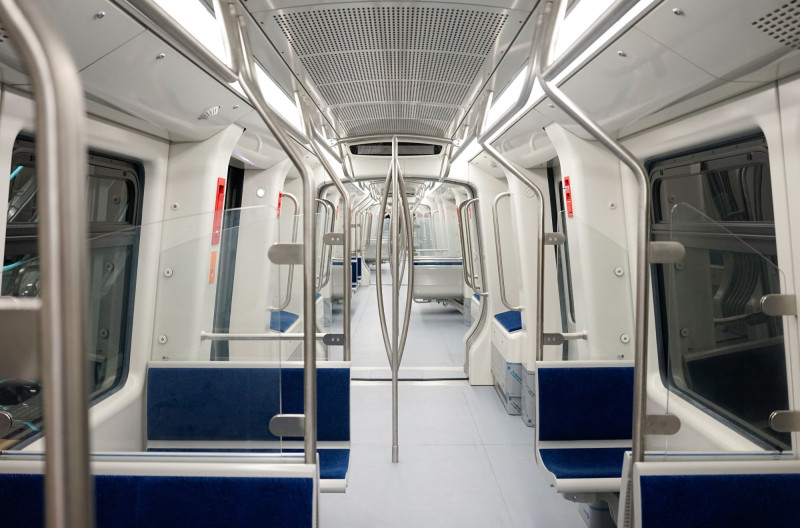The foreign company that operates the Copenhagen Metro has also taken over the operation of the Thessaloniki Metro – On November 30, the routes start
On November 30, the Thessaloniki Metro will start operating. The main line will be handed over to the public and the people of Thessaloniki are eager to see it in operation.
In his recent statements . the Deputy Minister of Transport Nikos Tachiaos said that the Metro will operate from 05:30 in the morning until 12:30 after midnight while he revealed that on Friday and Saturday the hours will be extended, but without giving more details.
Mr. Tahiaos also said that “at the moment we have outsourced its operation Measure in a private company with an international tender. Behind this company is a French giant, the EGIS and the Italian one ATM that is, the company that operates the Milan Metro and the same company also operates the Copenhagen Metrowhich is the same as ours Measure».
The Copenhagen Metrowas inaugurated on October 19, 2002 and the total length of the network today, is 38.2 kilometers and has 39 stations, while currently another 5 are under construction.
The length of its Baseline Thessaloniki Metro is 9.6 km long and has 13 stations
According to Radio Thessaloniki, all underground stations in the Copenhagen Metro are equipped with automatic platform doors for safety (like the Thessaloniki Metro) and open at the same level, simultaneously with train arrivals and stops.
One difference is that the Copenhagen Metro underground stations are at low depths, from 5 to 8 meterswhereas the Thessaloniki Metro is at greater depthssuch as the Venizelos station which is located approximately 24 meters below the Earth.
The features of the Baseline that will be delivered on November 30th
The length of the Main Line of the Thessaloniki Metro is 9.6 thousand. with two independent single track tunnels.
It has 13 modern stations (New Railway Station, Dimokratis, Venizelou, Agia Sophia, Fountain, University, Papafi, Euclid, Fleming, Analipsi, 25th of March, Bulgarian, New Switzerland) and Garage 50,000 sq.m.which includes the Operations Control Center, repair base and office space.
Trains will pass through the stations every 2.5 minutes at the initial stage of commercial operation and every 90 seconds after receipt of additional trains.
OR trip durationincluding stops at 13 stations, will be 17 minutes.
It is estimated that daily they will move 254,000 passengerswith a transport capacity of 18,000 passengers per hour and per direction.
After her delivery Extension to Kalamariain the second half of 2025, 313,000 passengers are expected to be served daily.
The operation of the Thessaloniki Metro is expected to relieve traffic congestion in the city, as it is estimated that approximately 57,000 fewer vehicles will circulate daily, correspondingly bringing about a reduction in CO2 emissions by 212 tons per day.
Archaeological Findings
Valuable archaeological finds, from different historical periods of the city, came to light during the construction of the stations, with the main ones being the “Venizelos” and “Agia Sofia” stations located within the limits of the historical center of the city.
Citizens will have the opportunity to see the great findings, in Thessaloniki Metro Stations and in museums. In fact, the “Venizelos” Station is internationally the largest archaeological site included in a major technical project. At the same time, part of the 300,000 antiquities found will be exhibited in the Museum being built in the “Crossover Fountain” with a total area of 6,370 sq.m. as well as in the Museum being prepared in the “Pavlos Melas” Metropolitan Park.
Advanced technology innovations and features
• 18 fully automated, air-conditioned trains of 4 vehicles, which will move without a driver, but with an attendant.
• Automatic door systems at each station, to ensure maximum safety for passengers during their stay on the platforms.
• The movement of trains is controlled by wireless transmission 5 – 10 times per second, with an accuracy of position of each train to about 1 meter.
• The operation data of each train (position, speed profile, alarms, diagnostics, signaling data, CCTV cameras, etc.), are transmitted wirelessly, through the same transmission system (DCS) and single antenna.
• There are high-definition cameras inside and outside, as well as in the front and rear of the train, with on-line video-streaming capability to the Operations Control Center.
• The materials of the train have been selected with a low Fire Load, they are recyclable and environmentally friendly in a percentage greater than 95%.
Source: Skai
I have worked as a journalist for over 10 years, and my work has been featured on many different news websites. I am also an author, and my work has been published in several books. I specialize in opinion writing, and I often write about current events and controversial topics. I am a very well-rounded writer, and I have a lot of experience in different areas of journalism. I am a very hard worker, and I am always willing to put in the extra effort to get the job done.











